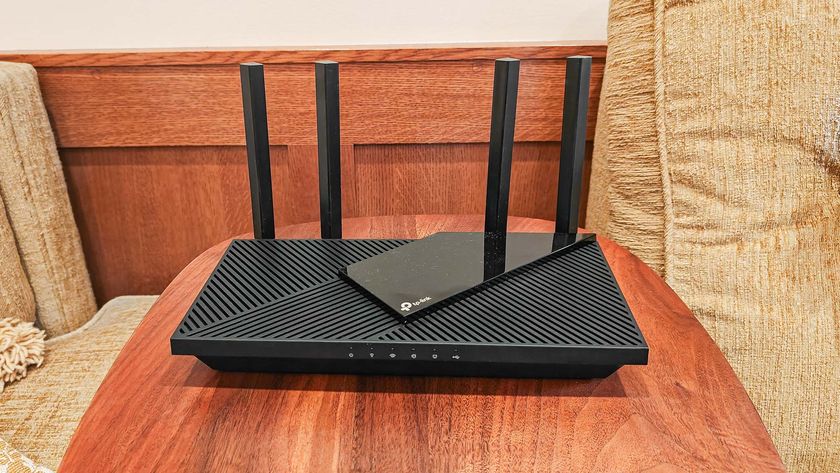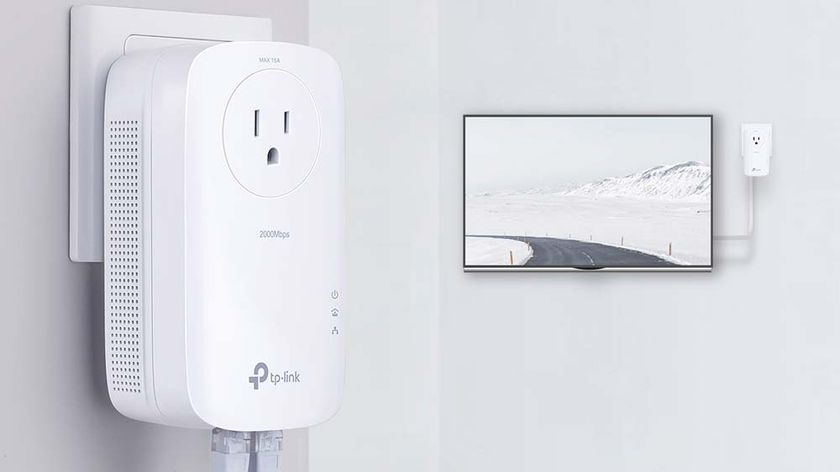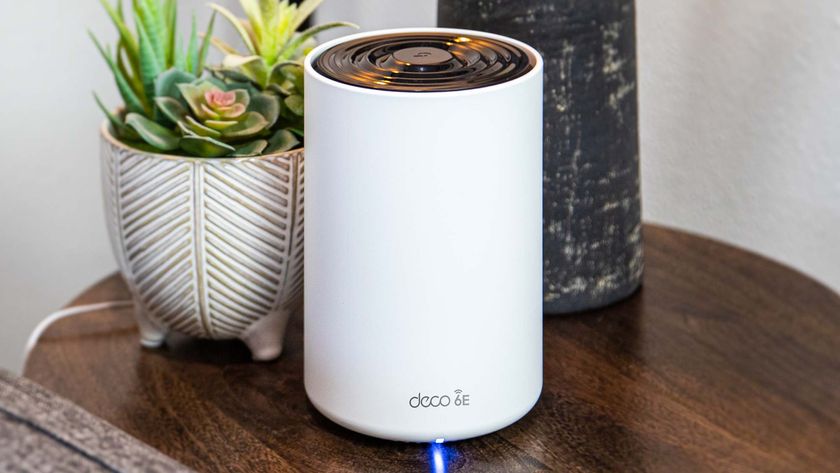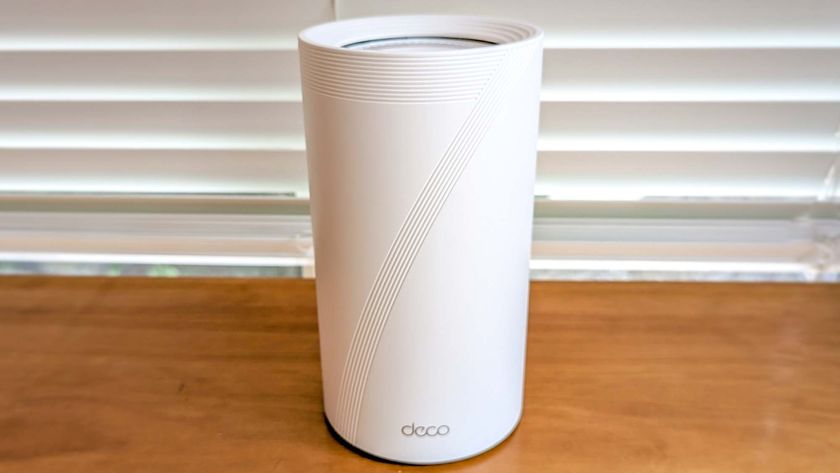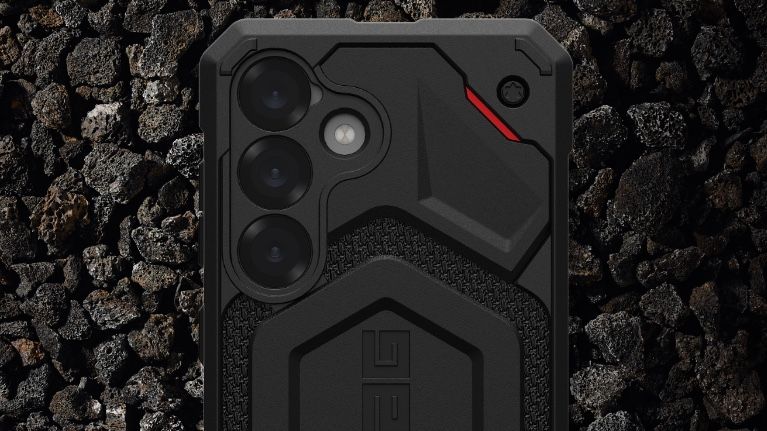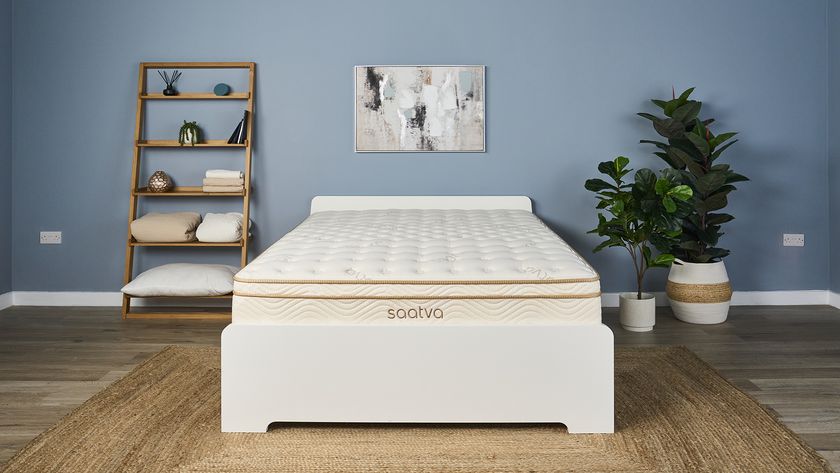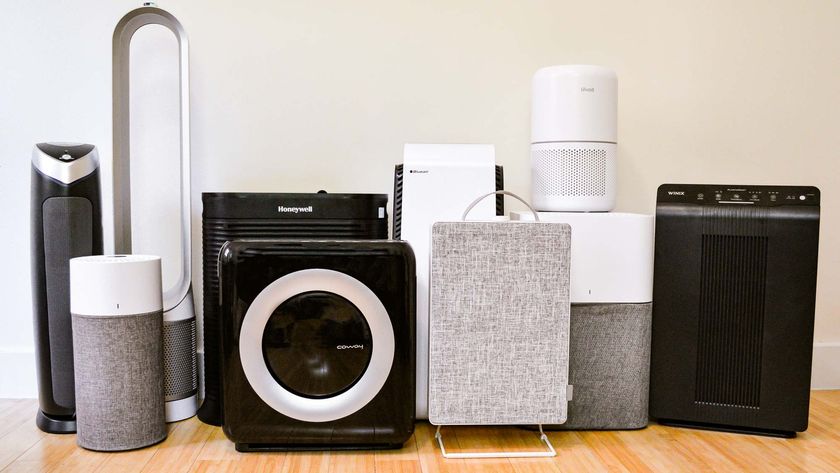The best Wi-Fi extenders in 2025
Add more range to your home network without the need to upgrade your router
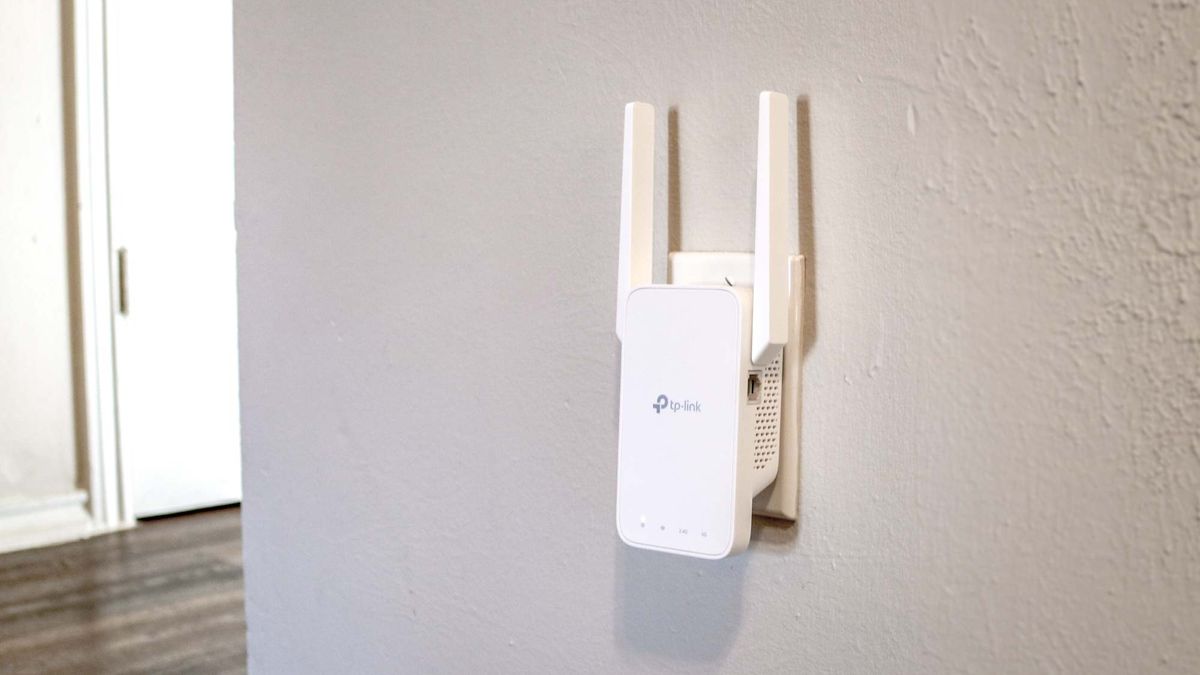
The best Wi-Fi extenders let you easily and inexpensively improve the range of your existing Wi-Fi router. If you’re not quite ready to upgrade to one of the best mesh Wi-Fi systems, a simple Wi-Fi extender could do the trick if you want to get rid of a particular Wi-Fi dead zone in your home.
Unlike the best Wi-Fi routers and other home networking gear, Wi-Fi extenders are incredibly simple to set up. You just plug one of the devices into an outlet near your router and the other into an outlet close to where your Wi-Fi dead zone is. There’s very little to configure and the whole process shouldn’t take you more than 15 minutes.
To help you pick the right Wi-Fi extender for your home, we tested out six of the most popular models available today and rated them based on speed, features and ease of use. If you’re looking for a quick Wi-Fi fix without having to upgrade to a new router, these are the best Wi-Fi extenders you can get today.
The quick list
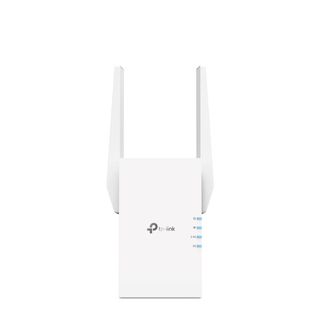
The TP-Link RE705X is a plug-in Wi-Fi extender that provides excellent performance thanks to its ability to use wide 160MHz data channels. In addition to a gigabit Ethernet port on its side, this Wi-Fi extender can also link up with a mesh network
Read more below
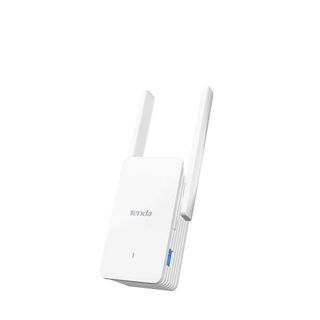
The Tenda A27 is a plug-in Wi-Fi extender that's highly configurable with lots of settings to tweak. This Wi-Fi extender has a gigabit Ethernet port and can also act as a wired access point. The Tenda A27 also packs in MUMIMO, beamforming and dual antennas.
Read more below
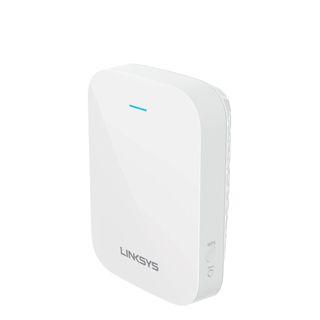
The Linksys RE7310 is a plug-in Wi-Fi extender that's simple to set up and configure. While it lacks any additional ports, Linksys' Spot Finder technology makes it easy to install in the optimal place in your home to extend your Wi-Fi network.
Read more below
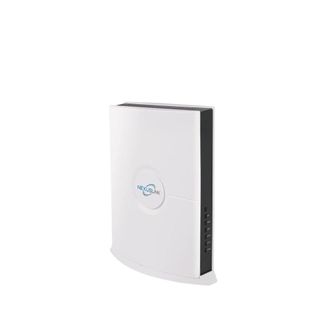
The NexusLink Wireless Gaming Bridge WB-1750 is a standalone Wi-Fi extender that acts like a wireless cable to connect Ethernet-equipped devices to your router. Available in a two-pack, each device features two gigabit Ethernet ports.
Read more below
The best Wi-Fi extenders you can buy today
Why you can trust Tom's Guide
Best Wi-Fi extender overall
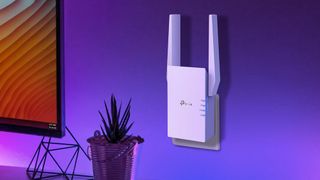

Specifications
Reasons to buy
Reasons to avoid
The TP-Link RE705X takes the top spot with excellent performance, the ability to use wide 160MHz data channels, a three-year warranty and it can even link up with your mesh network. While it may not be the smallest Wi-Fi extender out there, it does have positionable antennas and the LED lights on its side show you the status of its 2.4- and 5GHz networks along with the strength of its signals.
Although the TP-Link RE705X doesn’t have a USB port for sending data over your home network, it does have a gigabit Ethernet port on its left side for connecting hardwired devices. It also uses the latest Wi-Fi 6 tricks like MUMIMO, beamforming and 1024 QAM modulation to give you excellent speeds. At the same time, TP-Link’s Adaptive Path Selection system helps pick the best route for data to travel. The TP-Link RE705X also performed well in our tests moving 528 Mbps at 10 feet but it did get hot while in use. If you’re looking for a plug-in extender that’s easy to set up, this is the one to get.
Read our full TP-Link RE705X Wi-Fi extender review.
Best Wi-Fi extender on a budget
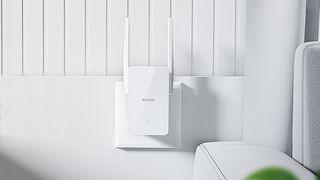
Specifications
Reasons to buy
Reasons to avoid
The Tenda A27 is another plug-in Wi-Fi extender that sets itself apart from the others on this list thanks to its wealth of customization options. However, it lacks a setup app and must be configured from a web browser. Still, once this is done, you can choose to have it work as an extender or access point and its More section lets you use OFDMA and change the time zone.
Besides using MUMIMO, beamforming and 1024 QAM modulation to give you a strong signal, its 5dBi amplified antennas help it grab a weak Wi-Fi signal to boost it and retransmit it. Its paddle antennas can also be rotated to aim its transmissions. In our testing, the Tenda A27 delivered reasonable performance with speeds up to 294.3 Mbps at 10 feet. If you want a Wi-Fi extender with a class-leading three-year warranty and a gigabit Ethernet port, the Tenda A27 is perfect for stretching the range of your home network.
Read our full Tenda A27 Wi-Fi extender review.
Best Wi-Fi extender for range
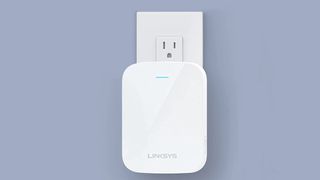
Specifications
Reasons to buy
Reasons to avoid
The Linksys RE7310 is a plug-in Wi-Fi extender that goes without movable antennas for a more compact design despite still being rather bulky. Instead, its antennas are hidden inside its case while a single LED bar near the top lets you know the status of its connection. However, there’s no way to turn this LED off nor is there a startup and configuration app to get it set up, you need to use a connected browser instead.
The Linksys RE7310 can connect with up to 20 clients at once and just like the other top Wi-Fi extenders on this list, it uses the latest Wi-Fi 6 technology including MUMIMO, beamforming and 1024 QAM modulation. However, it lacks both Ethernet and USB but it does have a WPS button at its side for quickly connecting wireless devices. In our tests, the Linksys RE7310 was able to move 322.4 Mbps at 10 feet and its Spot Finder technology helped us set it up in the perfect spot. If you want a Wi-Fi extender with good all-around performance that’s easy to get its placement just right, this might be the one for your home network.
Read our full Linksys RE7310 Wi-Fi extender review.
Best Wi-Fi extender for gamers
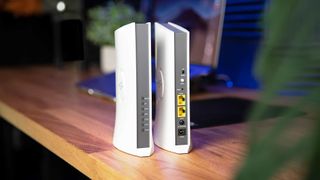
Specifications
Reasons to buy
Reasons to avoid
The NexusLink Wireless Gaming Bridge WB-1750 is a bit of an outlier as it acts more like a wireless cable to connect Ethernet devices to a router than a traditional Wi-Fi extender. It was easy to set up and provided excellent range despite being the only device on this list still using Wi-Fi 5. However, two units are required for it to work and the devices you connect need to be hardwired over Ethernet.
The NexusLink Wireless Gaming Bridge is much larger than other plug-in Wi-Fi extenders and each unit has its own power supply. At the front, there are seven LEDs that show its connection status and both devices are meant to be placed vertically as opposed to horizontally. In our testing, the NexusLink Wireless Gaming Bridge was able to deliver 143.2 Mbps at 10 feet but it does have a longer range of 110 feet. If you need a way to get a better connection to your game consoles and don’t want to run an Ethernet cable across your house or try using a powerline adapter, the NexusLink Wireless Gaming Bridge might be just what your gaming setup was missing.
Read our full NexusLink Wireless Gaming Bridge WB-1750 review.
Do you need a Wi-Fi extender?

With so many options for upgrading your home network, like getting a new router or a mesh router, or adding a Wi-Fi extender or powerline extender, how do you know which is the best option for you?
If your existing Wi-Fi router is able to adequately cover most of your house, you may not necessarily need to buy a new one. A Wi-Fi extender is the perfect solution if you have one room or one section of your house where the internet always seems to cut out. Wi-Fi extenders are great for eliminating specific dead spots, for giving your Wi-Fi signal a little more range to reach that far room or giving your Wi-Fi a little oomph to make it to the next floor.
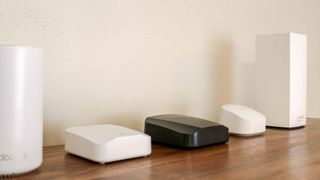
If you have large portions of your home or property that don’t get adequate Wi-Fi though, you may need to step up to one of the best mesh Wi-Fi systems, which use multiple devices called satellites or nodes to create a larger shared network. If you have multiple rooms with spotty coverage or a far end of the house that your router just can’t reach, or want to extend your coverage out to the garage or even the backyard, then a mesh kit is the better choice.
How we test the best Wi-Fi extenders

Every Wi-Fi extender we review is evaluated based on a combination of extensive performance tests and hands-on use in a real home. This mix of real-world use and controlled benchmark testing provides us with a clear picture of how well each device performs.
For benchmarking Wi-Fi extenders and other networking equipment, we use Ixia's IxChariot testing software to measure throughput at a variety of distances and environmental conditions. This includes testing with the extender at 50 feet and 75 feet away from a router.
This software simulates traffic on a busy wireless network while measuring how data flows back and forth. The results are shown in megabits per second (Mbps) at a distance from the extender, with higher numbers indicating better performance.
Measuring the throughput at various distances also allows us to determine the effective range of each extender, giving you a better idea of how well a device will do when it comes to covering the farthest corners of your home with a stronger wireless signal.
We also use each product in a real home which has signal-thwarting brick walls and the kind of sturdy construction that basic routers tend to struggle with. In that environment, we use the network for everything from listening to music and streaming video to performing additional tests and even writing reviews.
All of our reviews also include additional details about the set-up process such as the quirks and cool aspects of the design along with all of the settings and management functions a device offers. If you want to learn more about any of the best Wi-Fi extenders detailed above, just check out the full reviews.
For more information, check out our guide on how we test Wi-Fi routers and our more general how we test page for Tom's Guide.
How to choose the best Wi-Fi extender for you
- How much should a Wi-Fi extender cost? The cheapest Wi-Fi extenders will often sell for less than $50. Newer signal boosting devices have support for all of the latest wireless standards like Wi-Fi 6E and even Wi-Fi 7 and offer technologies like beam-forming and Mu-MIMO for enhanced performance. While they cost more as a result, even the best Wi-Fi extenders can be had for less than $200. Also, it’s worth watching out for cheap discount range extenders, like the Super Boost Wireless-N Wi-Fi Repeater we looked at a few years back. Their attractively low price also brings extremely poor performance.
- Plug-in or desktop? Although most signal boosters use small, plug-in designs that connect directly to a wall outlet, they aren’t the only option available. Some of the best Wi-Fi extenders have larger designs that sit on a desk or shelf, more like a traditional router. These larger devices don’t have the same size and weight limitations of plug-in units which allows for better antenna placement and improved internal hardware. On the other hand, plug-in models are often less expensive and easier to install.
- Match Wi-Fi standards: While you may not pay much attention to which wireless standard your router uses, it will certainly have an impact on how helpful your extender is. If your wireless router uses the 802.11ac standard or Wi-Fi 5, you’ll want to make sure your extender does too. The older 802.11n standard (retroactively named Wi-Fi 4) is slower and is often limited to one band, which will create a bottleneck in your Wi-Fi coverage, slowing down your browsing and streaming. However, this is only a problem if your router offers better speeds. These days, Wi-Fi 6 is the minimum wireless standard we'd recommend. Instead of getting a Wi-Fi extender, you're better off upgrading your router if you're still using Wi-Fi 5.
- Placement is everything: Both wireless routers and Wi-Fi extenders use radio waves to share data back and forth with your internet connection. You need to find a place that’s close enough to the router to get a strong signal to rebroadcast but still far enough away to extend the network’s range to where it’s needed. Check out our guide to Wi-Fi extender placement. Likewise, you want to keep your router and Wi-Fi extender away from large appliances as they can lead to interference and poor performance.
- Consider an upgrade: If your wireless router isn’t providing the speeds or coverage you want, it may be best to skip getting a Wi-Fi extender entirely and just get a new router. Newer models offer better performance while mesh routers allow you to expand your wireless coverage across even the largest homes.
Wi-Fi terms explained
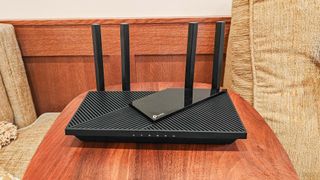
Are you having trouble figuring out what all these different wireless terms mean? We’re here to help with these explainers. If you have an older router, you can turn it into a Wi-Fi extender. You should also check out our guide on how to set up your Wi-Fi extender for the best signal. However, if you’re trying to decide between an extender and upgrading to a mesh router, then you’ll want to read when and when not to use a Wi-Fi extender — and what to do instead.
There are also a lot of new Wi-Fi standards available, including Wi-Fi 6, Wi-Fi 6e, and Wi-Fi 7. By knowing what they are and how they work, you’ll be able to choose the best system for your home.
Sign up to get the BEST of Tom's Guide direct to your inbox.
Get instant access to breaking news, the hottest reviews, great deals and helpful tips.

Anthony Spadafora is the managing editor for security and home office furniture at Tom’s Guide where he covers everything from data breaches to password managers and the best way to cover your whole home or business with Wi-Fi. He also reviews standing desks, office chairs and other home office accessories with a penchant for building desk setups. Before joining the team, Anthony wrote for ITProPortal while living in Korea and later for TechRadar Pro after moving back to the US. Based in Houston, Texas, when he’s not writing Anthony can be found tinkering with PCs and game consoles, managing cables and upgrading his smart home.
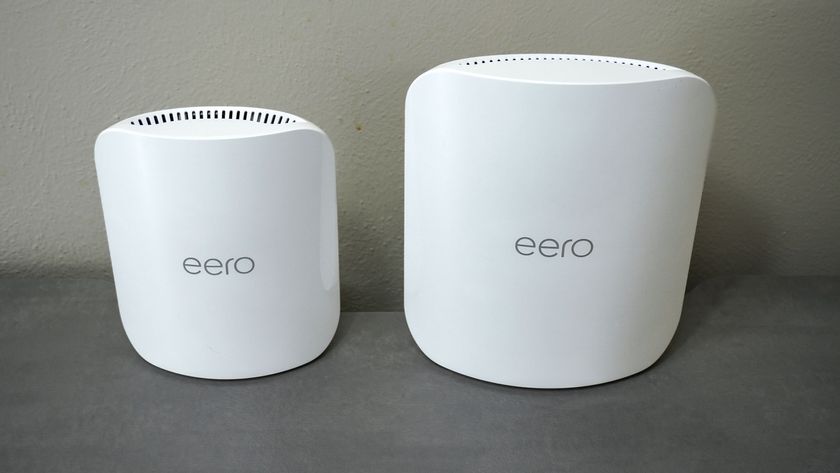
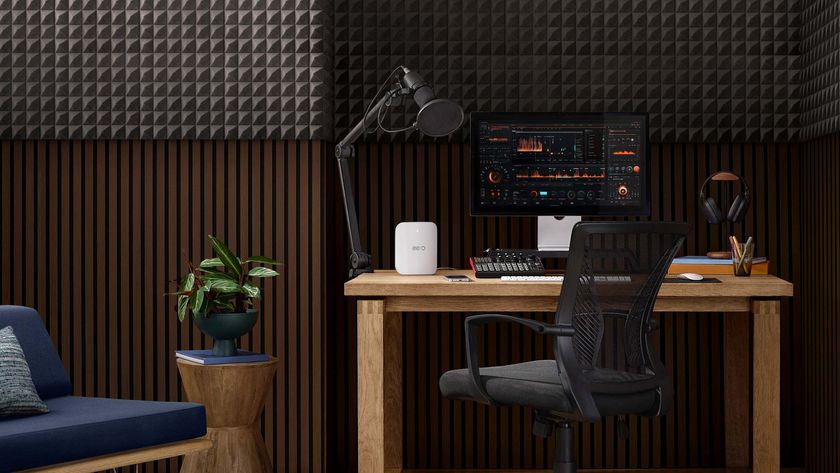
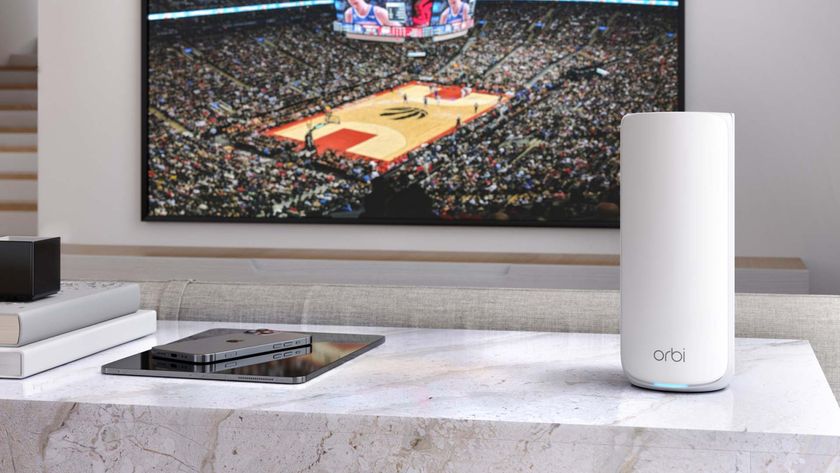
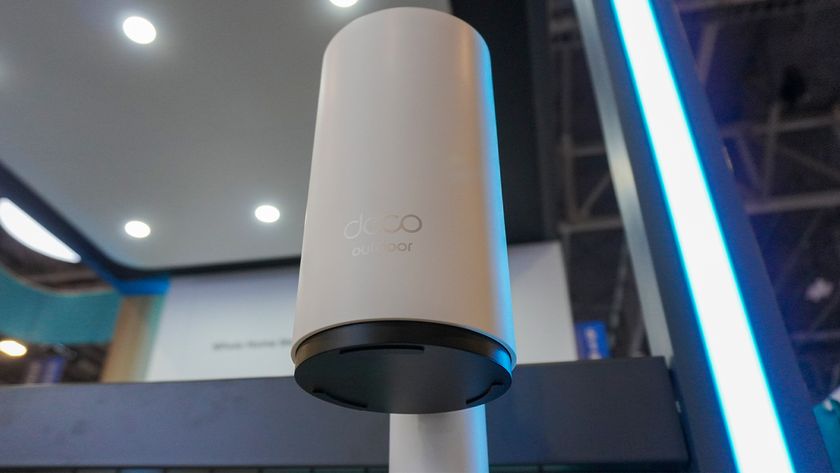
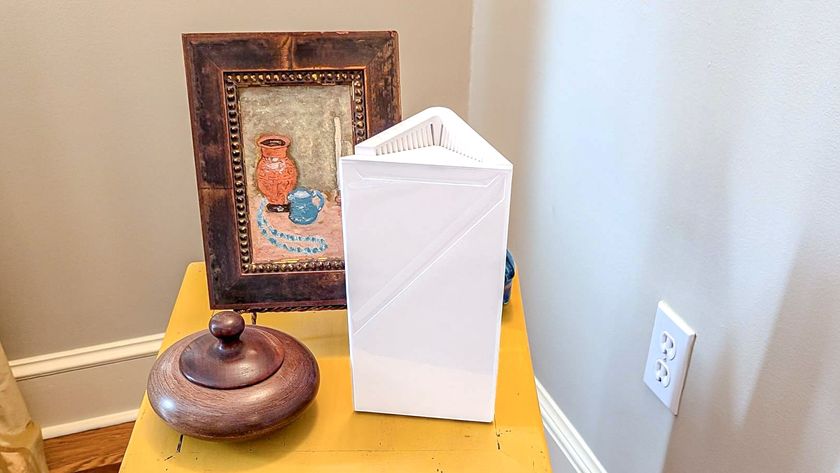
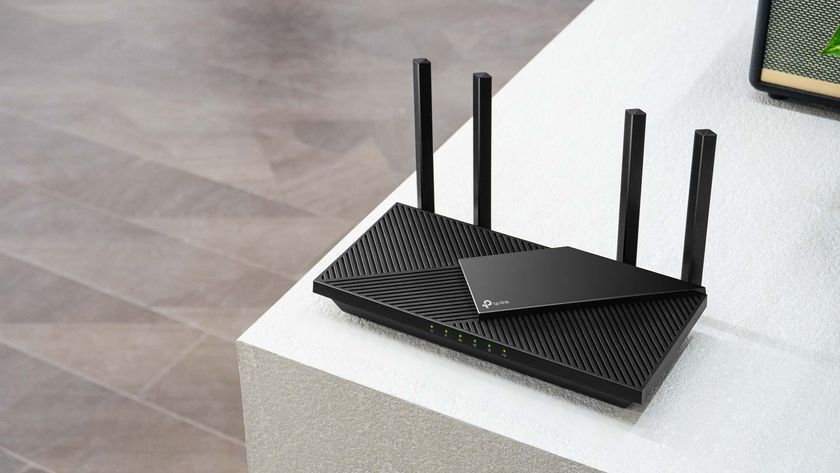

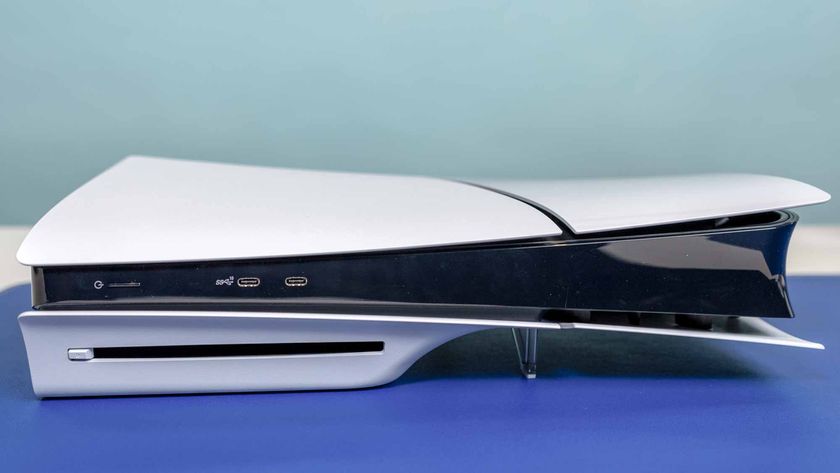
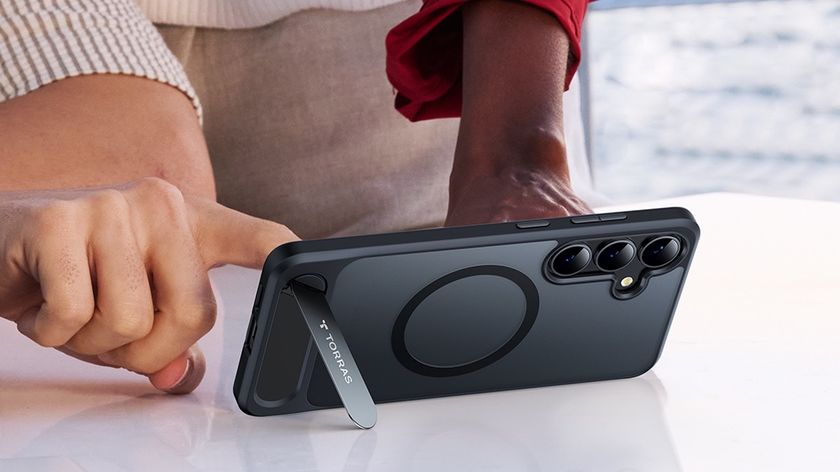

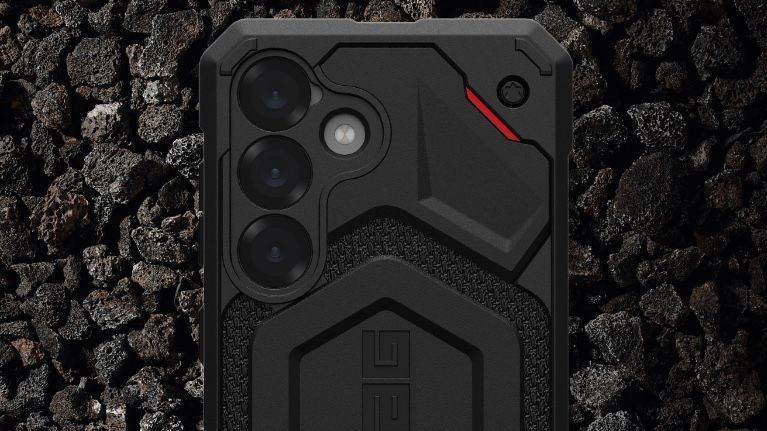

-
prashB Hi Tom, I use Wi-Fi at home, coffee shop and library and carry Wi-Fi booster around. Do you know of a Wi-Fi booster/extender that once programed to a Wi-Fi router saves its info and when configured to other weak public Wi-Fi router saves its info as well. A Wi-Fi booster than can save more than 1 router info in it. So that next time when plugged in within a range of 1 of the pre-configured router does not need to re configure again.Reply
Example… the way our laptops store various Wi-Fi routers security info and when within a range just connects it.
Currently I have Netgear WN3500RP configured to my home. It works fine there. When I decided to take it to a coffee shop and use there had to factory reset it to configure it to the
coffee shop. I do not want to factory reset every time I configure to a new place.
-
dolandr I just got this and set it up but it wouldn't see my 2.4ghz network at all! I had to click the text that reads "I don't need a second network". Will it not work as well because of that?? Also, is it supposed to improve speeds when doing a speed test because it didn't, in fact it got 32mbps versus 44mbps before right I bought it. Is there maybe a router setting I should do for it to see my 2.4? (I have a Netgear router)Reply -
Sonja_ Wow, RE6500 as best buy. You are very lucky or this paid review, no offense. I have that crap and it breaking whole network, DC every so, breaking connections between my devices and router, WPS not working at all. If you want more just go at Amazon and read 1 star reviews. There are no problem there I have not experienced. It even broke casting radio via router to Chromecast somehow. Could not listen more than 30 sec. Setup is story for it self, you can try same thing 5 times and it won't work, but 6th it will. It is like playing lottery, and yes, speed, my internet speed was dropped to 1/3 of my max speed, still RE6500 was showing that it is on perfect spot. DO NOT BUY THIS.Reply -
nasty62nick I bought the RE6500 and got it set up without difficulty but was surprised to find out that it does not offer the option of using MAC address filtering on the extended network. There has been some discussion about using MAC address filtering on the router and virtual MAC addresses assigned by the extender to achieve this but I don't have any spare spots in my router's permitted MAC address list. My old Netgear extender had no problem using MAC address filtering but it crapped out on me six months after the warranty expired.Reply -
mr_dj80 I can't believe nobody has commented this yet. Your wifi range chart says the TRENDNET TEW-822DRE comes in second place with 150 feet. But in your review comment, you say it comes in third with 125 feet.Reply
So, WHICH IS IT??? ;-)
I personalli am looking for a long range, but still cost/efficient wifi booster solution and was just about to buy the Trend 822dre based on your range chart.
But undtill confirmed, it seems I can't depend on the information provided! :-( -
Nick_150 thanks tom for this article. Very helpful as I've tried 3 different extenders so far but not this oneReply -
kerumbo The Netgear Nighthawk EX7000 rescued our changeover to gigabit wifi, which involved moving the router/modem to a different floor than my home office and past a weight-bearing wall. Throughput for the main floor's TV was over 250mbps, but my "work" computer upstairs was barely online. Our new "fast" wifi would have been worthless to me personally if not for the range and speed that this range extender gave me -- I got about 150 gigabits from the extender. Now the bad news: The EX7000 flat-out died in less than 2 months. I liked it enough to buy a second one, this time with the kind of add-on warranty that I normally refuse. So it was great, until it turned to crap.Reply -
optimisjoe About a year ago, I looked for cheaper alternatives including messing around with my router settings and trying different antennas and after my second attempt, luckily, I found these ASUS Antennas on Amazon (https://www.amazon.com/dp/B00PA1WCL4) that seemed to do the job perfectly. The reviews are pretty good and I would personally recommend them to anybody but nobody seems to be selling them on there anymore. I did find them on eBay however: http://cgi.ebay.com/122536401882Reply -
RichSad Hey Tom, I moved to an office in the farthest corner of my house in the basement. My TP-Link AC3150 WiFi router couldn't be relocated and I had trouble with 5GHz signal strength. Based on the positive reviews I saw of TP-Links earlier Range Extenders I decided to go bleeding edge with their new RE650 AC2600. WOWZA. It effectively tripled my speed on 5GHz. It's an awkward shape. I got it on Amazon with a $20 coupon so paid $109. Okla speedtest reports nearly 3X faster on 5GHz and 2.5X on 2.4GHz with no noticeable degradation anywhere on the network. I'd encourage you to test this model in the future. I can't speak for distance or some of the other criteria you measure on, but as far as getting it done this thing works better than I could have hoped.Reply
